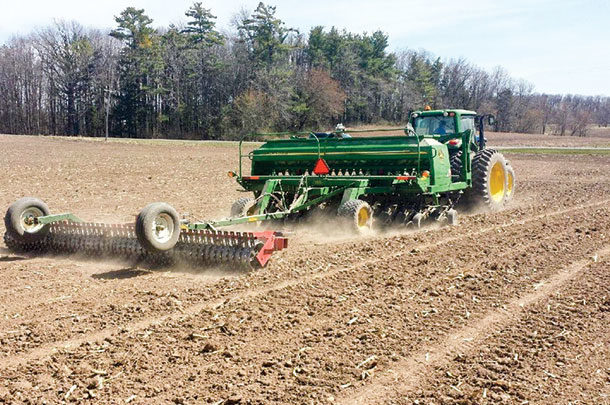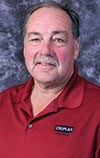Your alfalfa crop also needs a well-designed game plan. Think of alfalfa seed genetics as your high-powered offense and crop protection products and nutrients as your team’s defense.
Let’s consider genetically enhanced (GE) reduced-lignin alfalfa – the industry’s first genetically enhanced alfalfa technology developed to maximize quality compared to conventional alfalfa at the same stage of maturity, by reducing the amount of lignin in the plant.
It gives growers the ability to better manage the yield-versus-quality trade-off and offers more flexibility in cutting schedules to achieve improved forage quality or greater yield potential.
Here is a checklist to make sure you have a winning game plan this spring.
1. Know what you’re planting into
Carryover from a residual corn herbicide to alfalfa seedlings the following spring can cause stunting, uneven stands and even plant death. Read labels for carryover specifics, plan ahead and use corn chemistry this year that takes future alfalfa seeding into account.
Twelve-month planting intervals are common label restrictions when rotating from corn to alfalfa and should be followed. Using reduced rates of corn herbicides may not reduce the carryover risk.
Planting alfalfa into a winter rye cover crop or even winter wheat stubble in summer can cause establishment issues. A rest period with plenty of rain and heat is helpful to reduce the risk of allelopathy toxicity from winter rye and wheat. Tillage can help, but it is not a cure-all.
2. Use coated seed
Seed coating helps improve stand establishment and can increase seed efficiency. Seed coating can include fungicides, micronutrients such as zinc and manganese, plant growth promoters (regulators) and nitrogen-fixing rhizobium bacteria.
The first 30 days are the most critical time for alfalfa seedlings. Coated seed helps provide a stronger start so more seeds can become harvestable plants.
3. Monitor seeding depth
Ideal planting depth is 3/8 of an inch below the soil surface. In certain soils, depending on spring rain, planting too shallow or too deep can influence stand establishment.
A firm seedbed assures better depth control during planting.
Provide seed-to-soil contact by using a corrugated roller or press wheel drill to help tighten the soil particles against the seed to begin the germination process.
4. Focus on soil fertility
Soil pH: Achieving a neutral soil pH of 6.8 to 7.0 is critical to alfalfa success. Soil tests are an important indicator of low pH. In many cases, late lime applications will not help achieve a neutral pH value before seeding alfalfa.
High pH values (over 8.0) can also be an issue and are much harder to manage. Soil pH is one of the most important aspects of your alfalfa fertility game plan.
Potassium: Potassium is to alfalfa what nitrogen is to corn. At a minimum, potassium levels should be 150 parts per million (ppm) on a soil test. Keep in mind, about 50 pounds of potassium is extracted per ton of forage harvested. If you don’t replace it, your yield will be limited.
Phosphorus: The minimum level for phosphorus is 25 ppm. Even though we’re concerned about the environmental impact of excessive phosphorus, don’t underestimate the value of managing it responsibly for high-yielding alfalfa. Alfalfa plants use phosphorus for photosynthesis and to transport energy and nutrients.
Sulfur: Sulfur is critical to achieving optimal yield potential and high protein levels in alfalfa. Apply a minimum of 25 pounds per acre annually – preferably as sulfate sulfur. An optimal sulfur level in alfalfa is 0.30 percent on a plant tissue test. A soil test is less reliable when testing for sulfur.
Boron: Boron promotes cell division and stem elongation, and supports rhizobium activity. A tissue test is the best method to determine and monitor boron need. A level of 40 ppm in alfalfa plant tissue is required, which is four times the amount of boron needed for high-yielding corn.
Boron can be applied as a dry fertilizer with potassium and sulfur applications, or as a foliar spray application with insecticide.
5. Control insects
Potato leafhoppers are destructive insects that inject a toxin into alfalfa plant tissue that stunts growth, reduces quality and can even kill seedling alfalfa. In the Midwest and East, leafhopper reproduction peaks in July and August during the third and fourth crops. Only one insect per 10 sweeps is considered economic threshold.
Alfalfa weevil larvae can damage alfalfa during the first crop and at the beginning of the second crop. Alfalfa weevils are aggressive defoliators, consuming the most valuable part of alfalfa – the leaves – and feeding on emerging regrowth on the second crop, which is especially destructive. If 40 percent of your alfalfa crop shows any feeding, it’s time to spray.
6. Manage diseases
Fungicides are a fairly new and successful addition to alfalfa management to protect the plant against diseases. Foliar diseases can infect leaves or stems, which can reduce yield and quality potential.
Optimal times to spray a fungicide are at spring green-up and at second crop regrowth, when higher rainfall and leaf diseases are more prevalent, then again in late summer to protect the last cutting from stem diseases such as anthracnose.
7. Save the leaves and avoid the dirt
Alfalfa leaves are extremely high in quality – about 400 in relative forage quality (RFQ). Stems, however, are much lower – only about 60 RFQ at harvest maturity.
Leaf losses during cutting, merging and raking, and chopping and baling can be significant. Be aware of any leaf loss and assess the quality drop during harvest.
Adding soil particles to the crop during harvest can greatly increase ash content and reduce quality as well.
Your agronomist can help you determine the best course of action for successfully managing your alfalfa crop and to take full advantage of the newest seed technologies. Together, you can create a game plan to increase your yield and quality potential and to help make 2017 a winning year. ![]()
PHOTO: Provide seed-to-soil contact by using a corrugated roller or press wheel drill to help tighten the soil particles against the seed to begin the germination process. Photo courtesy of CROPLAN by WinField United.

-
Randy Welch
- National Alfalfa Agronomist and Wisconsin Alfalfa and Forage Specialist
- CROPLAN by WinField United
- Email Randy Welch











